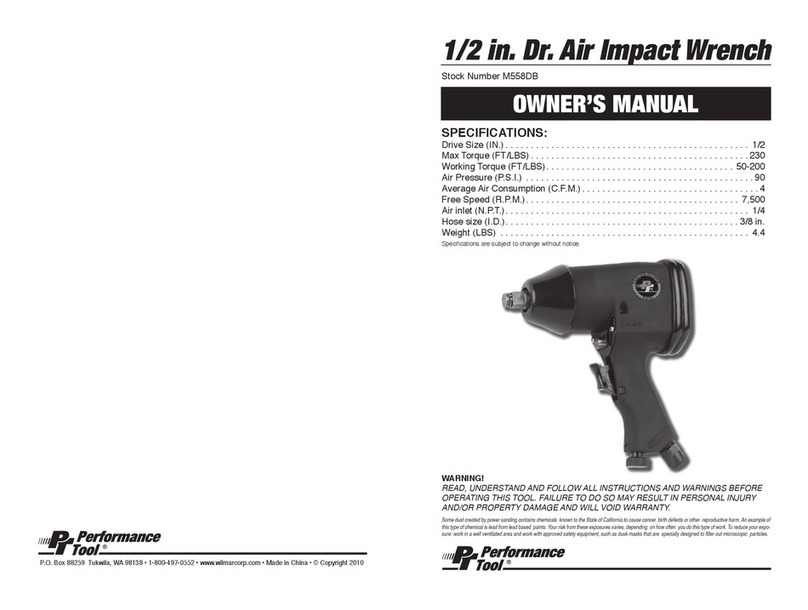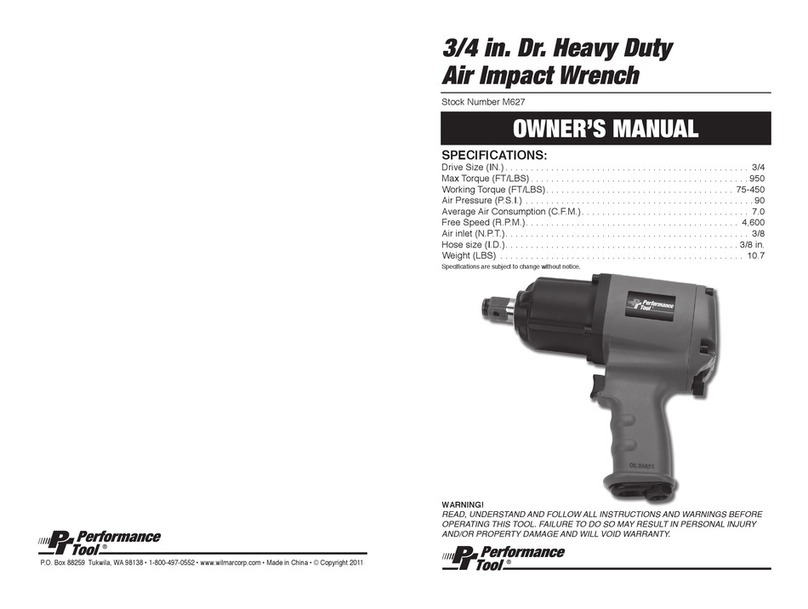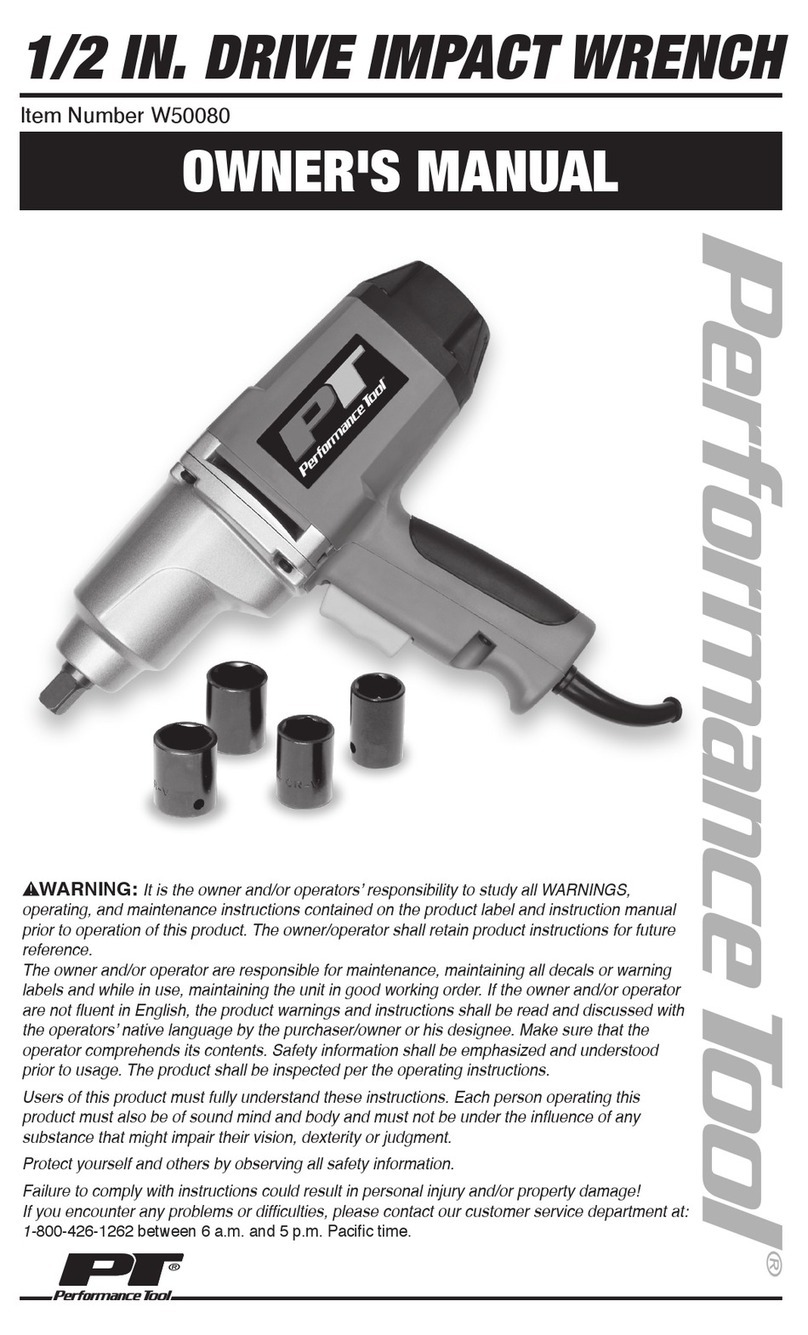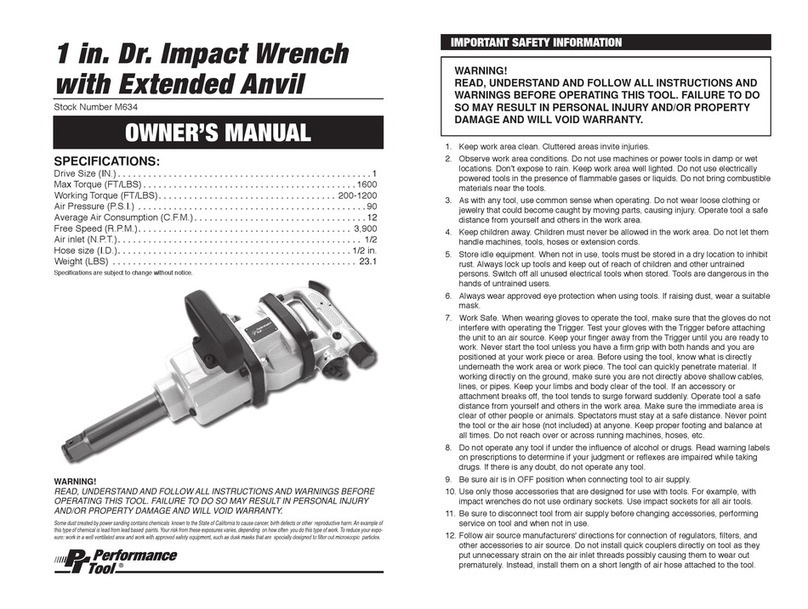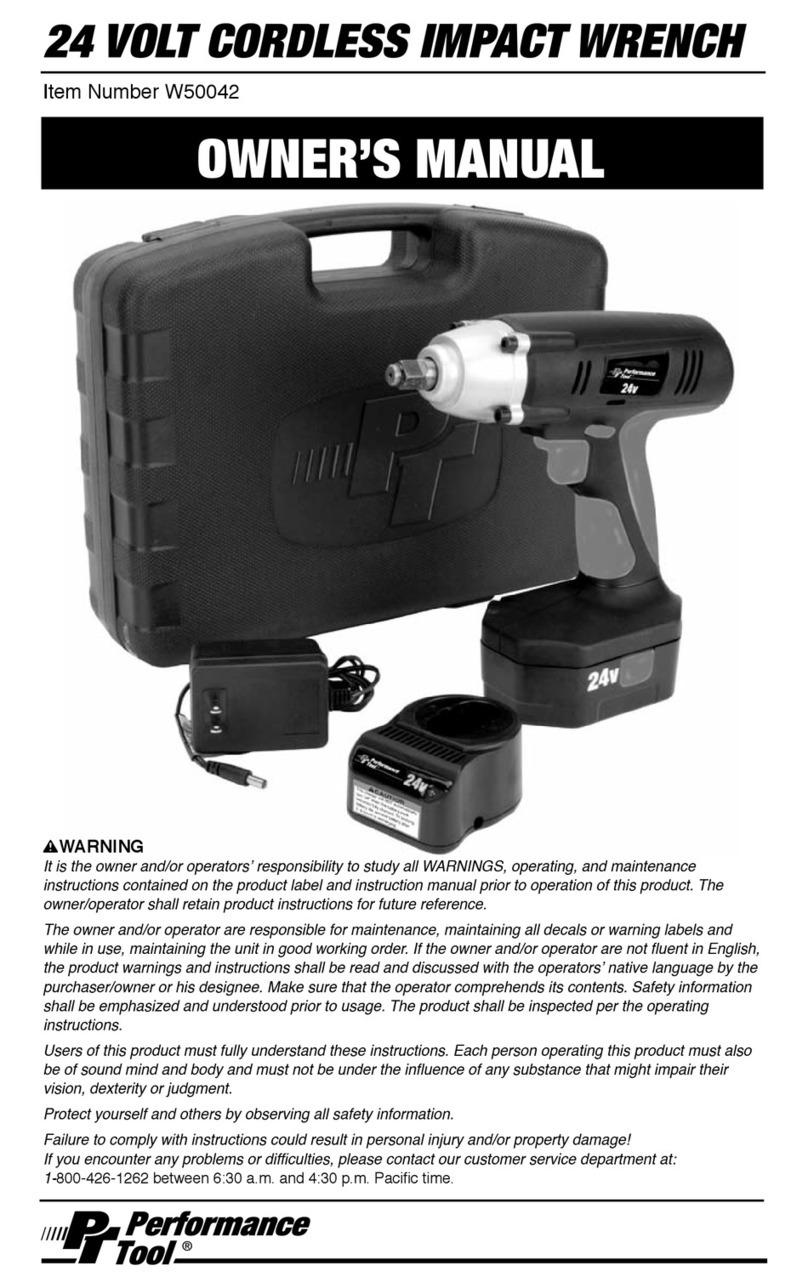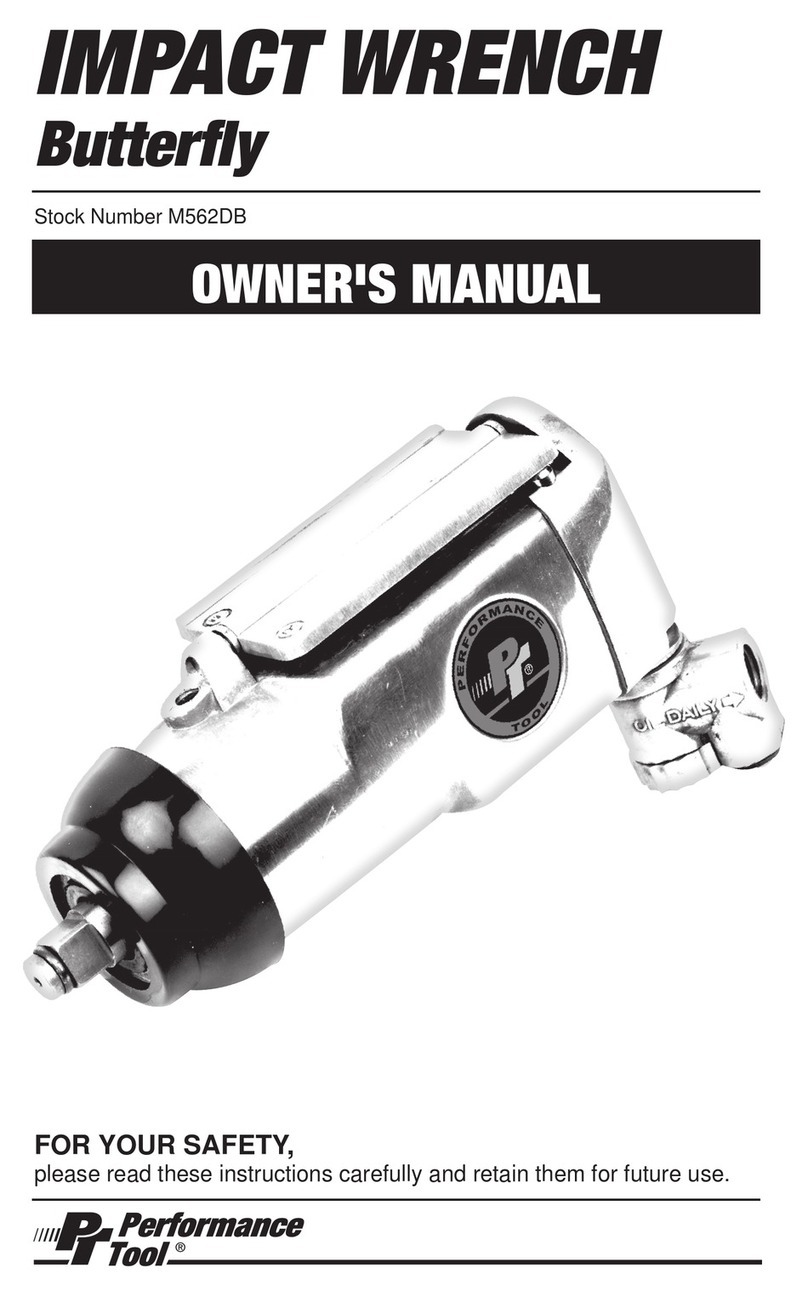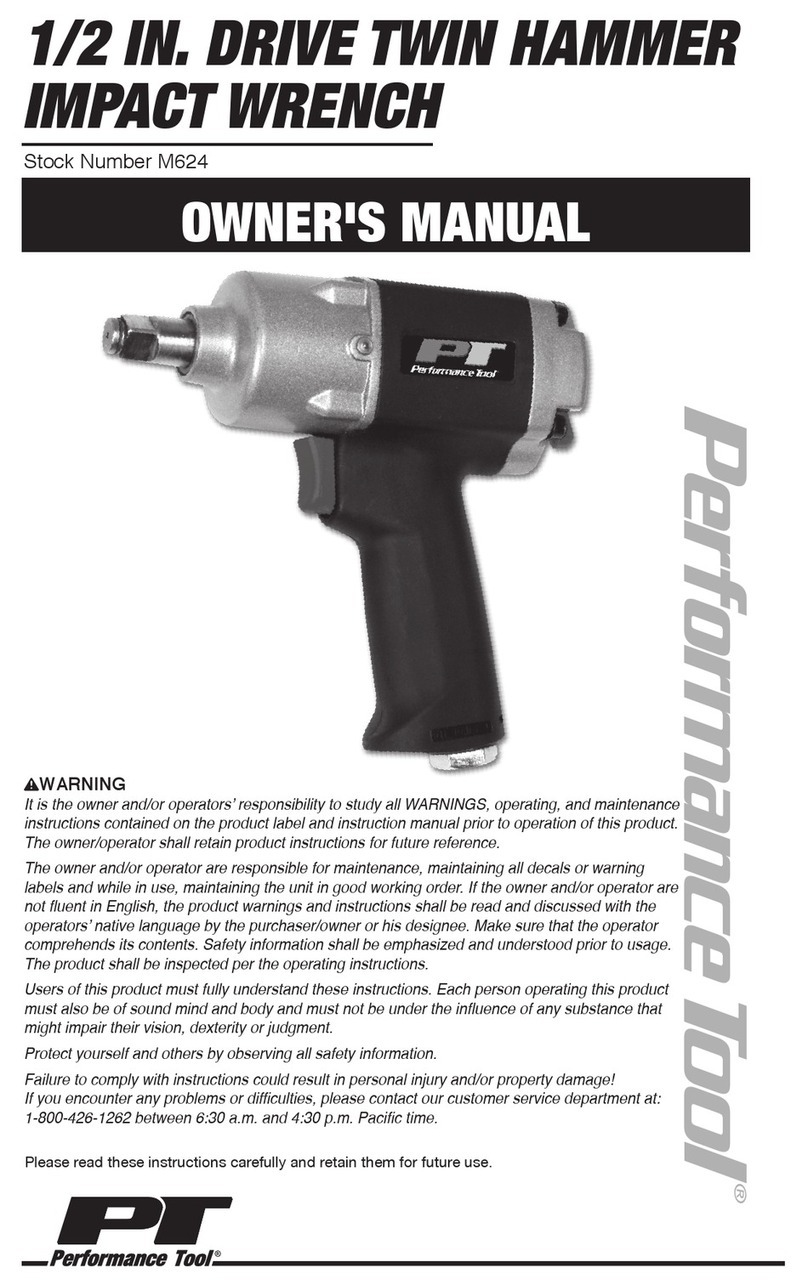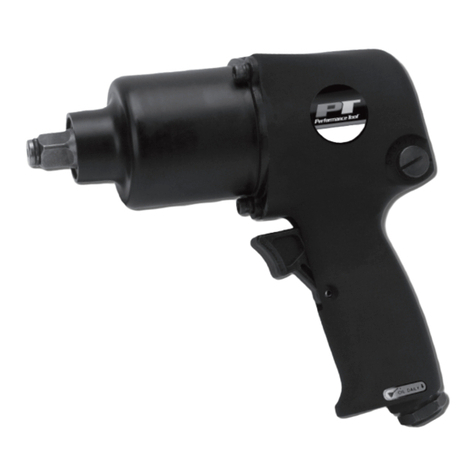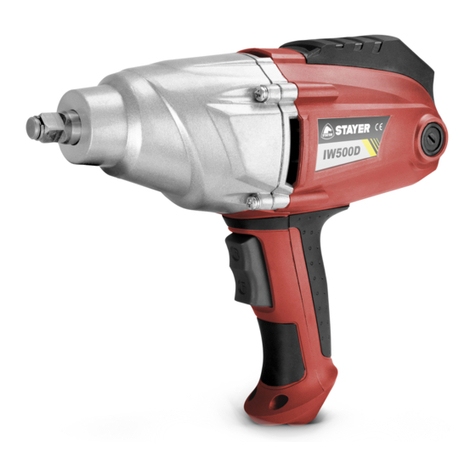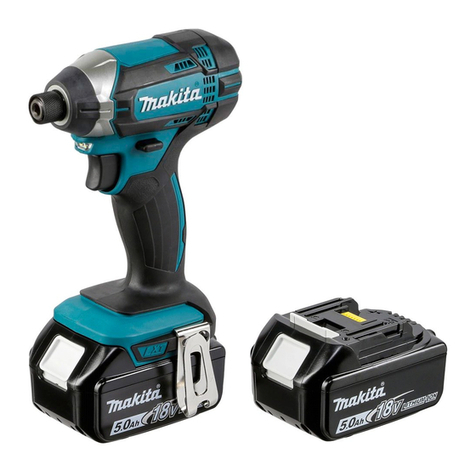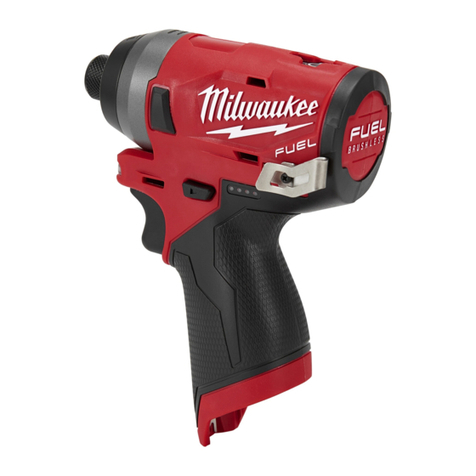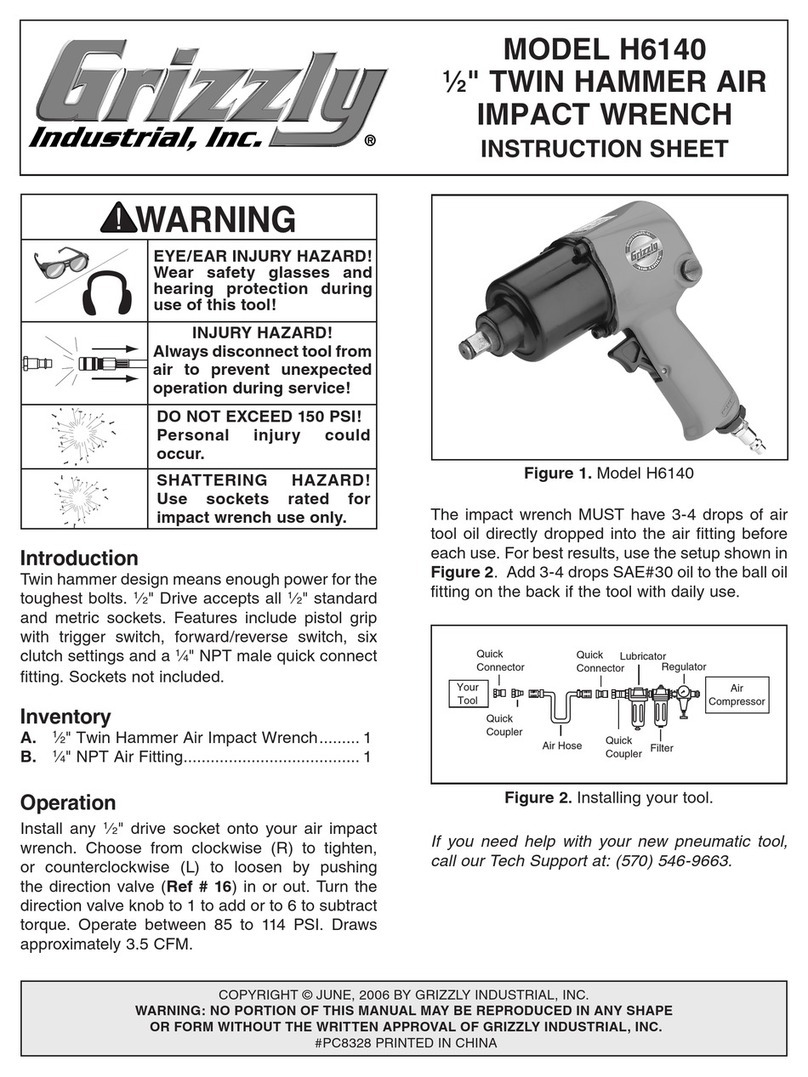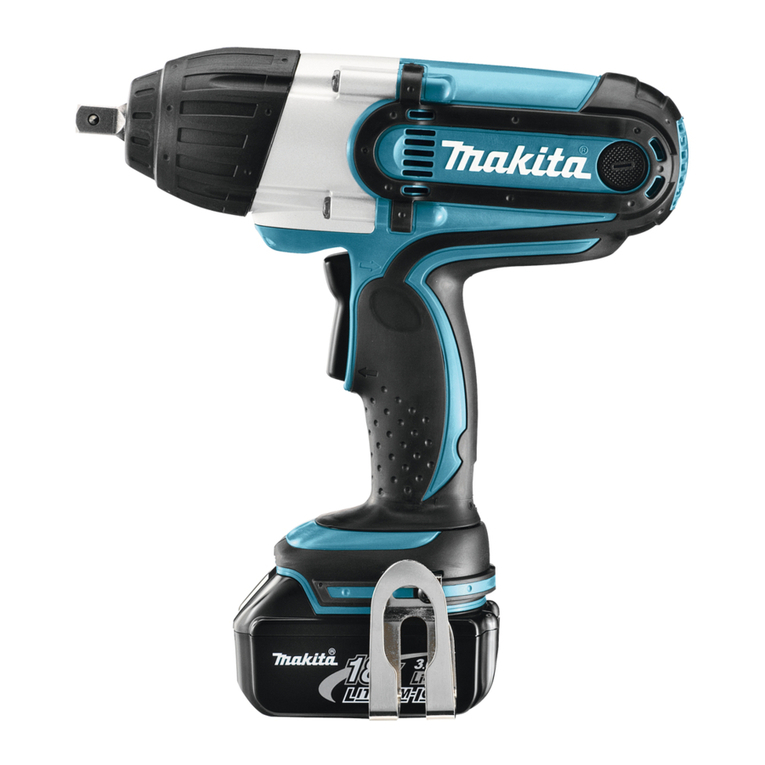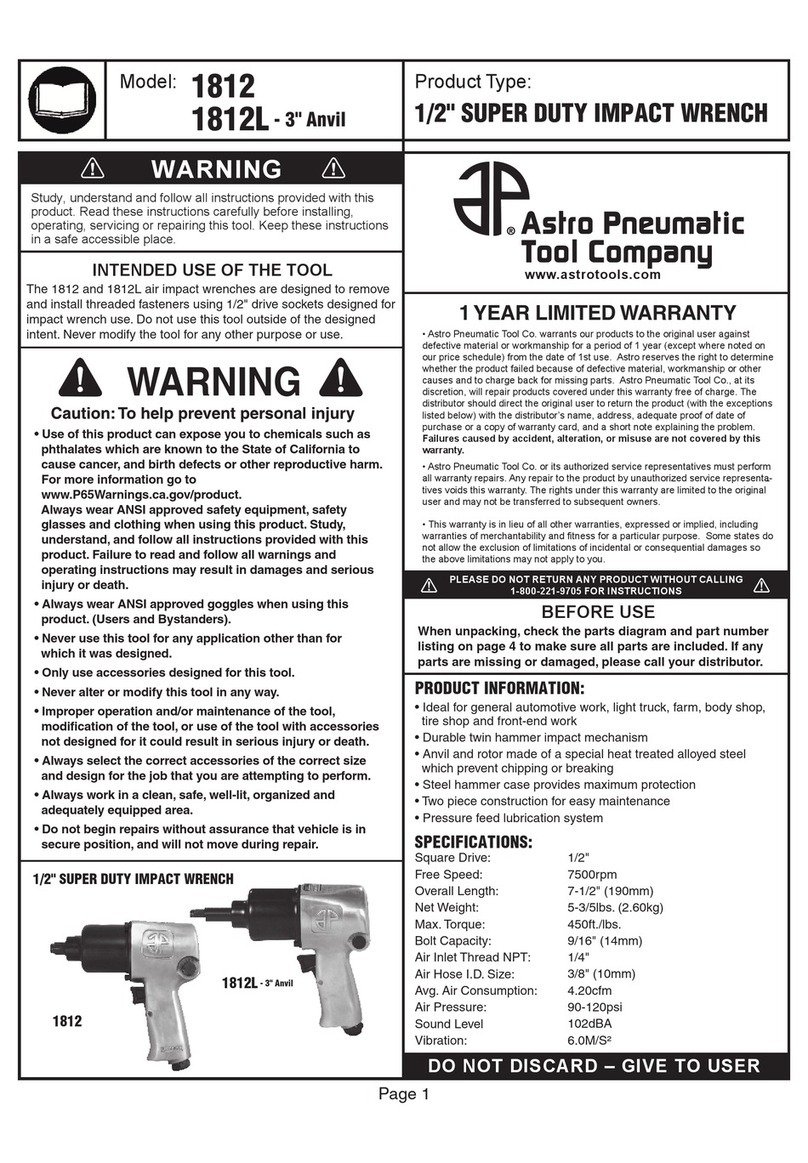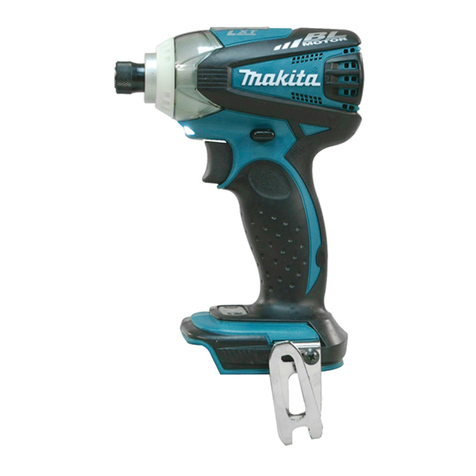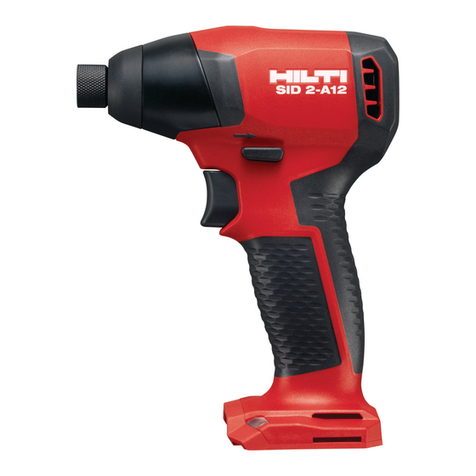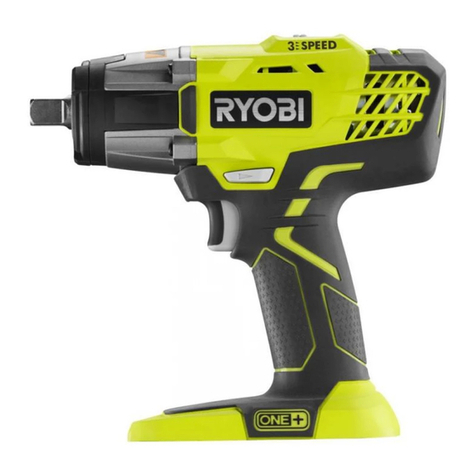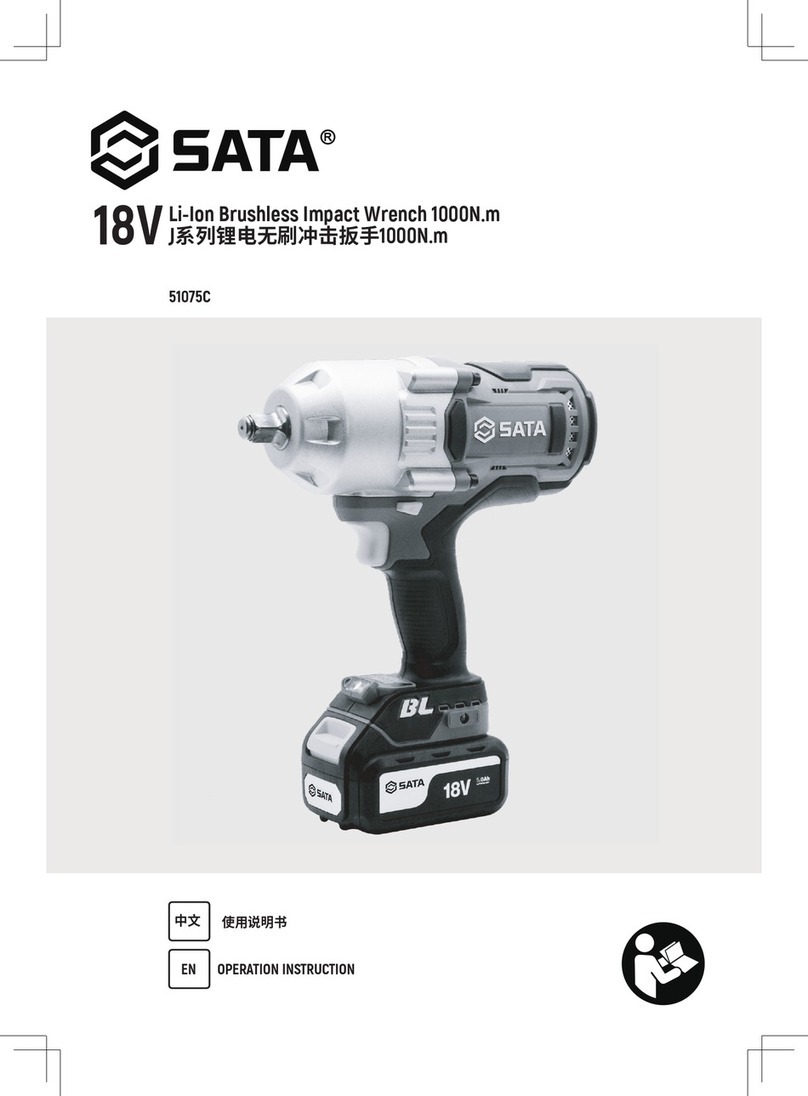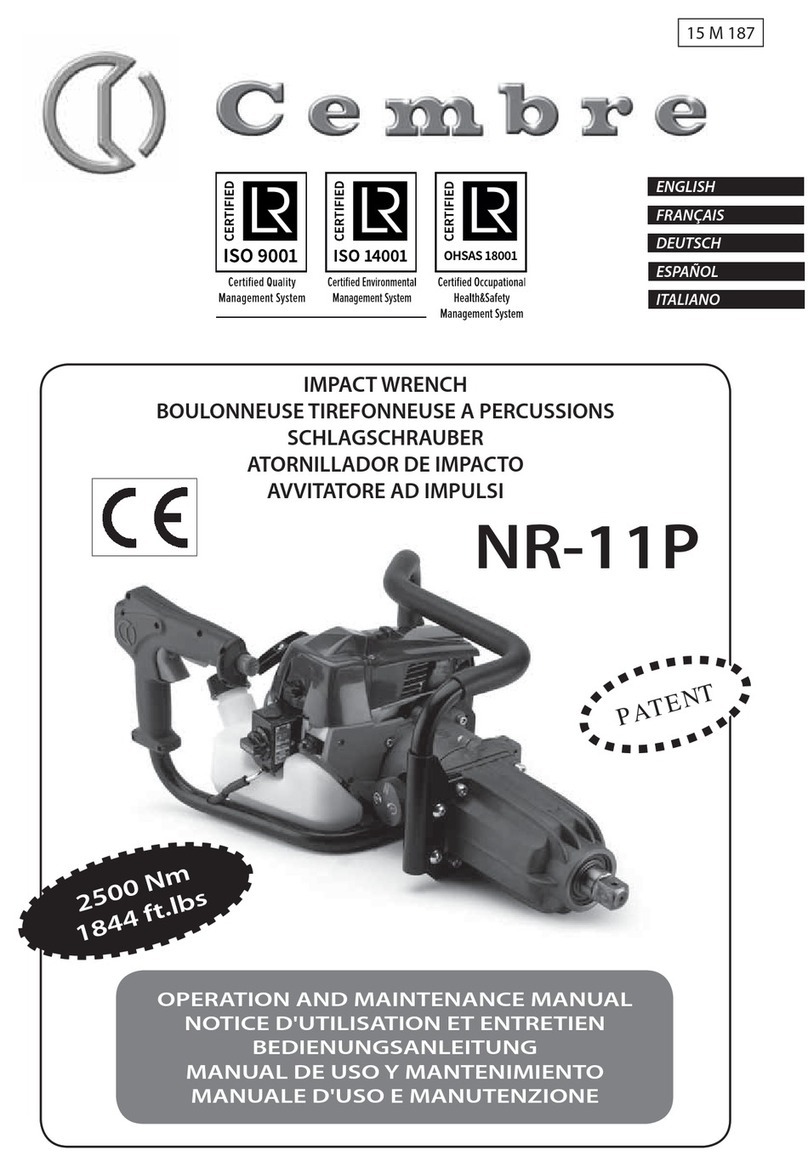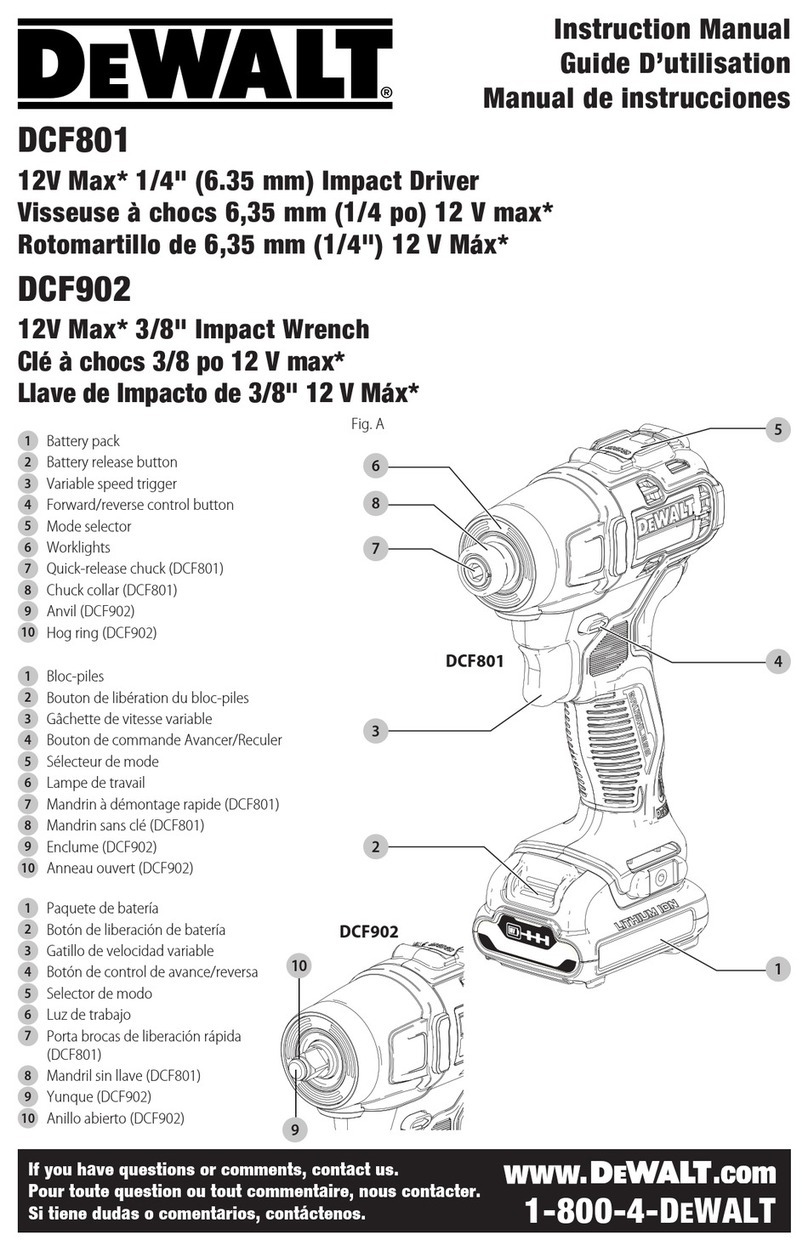
IMPORTANT SAFETY INFORMATION
1. Always work in a clean, dry, well-ventilated area free of combustible materials. Never
operate the tool near flammable substances such as gasoline, naphtha, cleaning
solvent, etc.
2. Dress properly. Do not wear loose clothing. Tie up or cover long hair, remove any
jewelry, necklaces, etc., which might become caught by the tool.
3. Keep the work area well lit and free of clutter. Slips, trips and falls are major causes of
workplace injury. Be aware of excess air hose left on your walking way or on the
working surface.
4. Ensure that there are no electrical cables, gas pipes, etc., which can cause a hazard if
damaged by use of the tool.
5. Keep visitors a safe distance from the work area. Keep children away.
6. Stay alert and use common sense. Watch what you are doing. Do not operate the tool
when you are tired or under the influence of alcohol, drugs or medication.
7. Do not overreach. Keep proper footing and balance at all times.
8. Always wear eye protectors which provides protection from flying particles from the
front and side when using the tool. Ear protectors should also be worn.
9. Never use oxygen, carbon dioxide, combustible gases or any other type of bottled
gases as a power source for this tool.
10. Always verify prior to using this tool that the air source has been adjusted to the rated
air pressure range. Never connect to an air source that is capable of exceeding 200psi.
11. Do not connect the air supply hose to the tool with your finger on the trigger.
12. Do not exceed the maximum working pressure 90psi/6.3bar for the tool. Excessive
pressure will reduce the tool life and/or might cause a hazardous situation.
13. Never leave the operating tool unattended. Disconnect the air hose when the tool is
not in use.
14. Keep the air supply hose away from heat, oil and sharp edges.
15. Check the air supply hose for wear and/or leaks before each use. Make sure that all
connections are tight and secure.
16. Do not use the tool for any other than its intended use.
17. Do not carry out any alternations and/or modifications to the tool.
18. Always disconnect the tool from air supply before replacing any accessories,
performing any repair and maintenance, moving to another work area, or passing the
tool to another person.
19. Never use the tool if it is defective, damaged, or operating abnormally.
20. Check for misalignment or binding of moving parts, breakage of parts and any other
condition that affects the tool operation. If damaged, have the tool serviced before using.
21. Keep working parts of the tool away from hands and body.
22. Do not carry the tool by the air hose.
23. Do not apply excessive force of any kind to the tool. Let the tool perform the work at
the rate as it was designed.
24. Do not remove any labels on the tool. Replace if they become obscured or damaged.
25. Always maintain the tool with care. Keep it clean for the best and safest performance.
26. It is not recommended that quick change couplings should be located directly at the
air inlet, as they add weight and could fail due to vibration.
27. This tool vibrates with use. Continuous operation of this tool might be harmful to your
hands or arms. Stop using the tool if discomfort, a tingling feeling or pain occurs.
Resume work after recovery. Seek medical advice if a serious symptom occurs.
WARNING!
READ, UNDERSTAND AND FOLLOW ALL INSTRUCTIONS AND
WARNINGS BEFORE OPERATING THIS TOOL. FAILURE TO DO
SO MAY RESULT IN PERSONAL INJURY AND/OR PROPERTY
DAMAGE AND WILL VOID WARRANTY.
2
AIR IMPACT WRENCH SAFETY
1. Use only clean, dry, regulated compressed air as the power source.
2. Air compressors used with the tool must comply with the appropriate European
Community Safety Directives.
3. Make sure that the air compressor being used for the tool operation supplies the
correct output (CFM).
4. Have the tool in "off" position when connecting the tool to the air supply.
5. Use normal 90psi working pressure for the tool. High pressure and unclean air will
shorten the tool life due to the faster wear and also may create a safety hazard.
6. Drain water from the air compressor tank daily, as well as any condensation in the air
lines. Water in the air line may enter the tool and cause damage to the tool mechanisms
at operation.
7. Clean the tool air inlet screen filter for blockage weekly. Clean if necessary.
8. Usually a 3/8" (inner diameter) air hose is recommended for air supply and airflow to
get the optimum performance of tool.
9. A long air hose (usually over 8 meters) may cause up to 15psi drop in pressure, so
you need to set the output pressure of the air compressor higher to maintain the
required working pressure at the tool.
10. Use proper hoses and fittings. We do not suggest connecting quick change couplings
directly to the tool since they may cause failure due to tool vibration at operation.
Instead, add a lead hose and connect coupling between air supply and hose whip.
11.
Check hoses for wear before each use. Make certain that all connections are in security.
AIR SOURCE
1. Always use the impact wrench in the manner and for the functions described in this manual.
2. Always ensure the wrench is not moving and disconnected from the air supply when
changing sockets etc. Only use impact sockets. Do not use standard sockets.
3. Always finish tightening wheel nuts or engine parts with a torque wrench or suitable
spanner to the correct torque as recommended by the vehicle manufacturer.
4. Always avoid excessive use of the impact wrench. When tightening a nut or bolt,
never allow the wrench to impact more than 8 times. This is to avoid over-tightening. 3
to 4 impacts is normally sufficient.
5. Always ensure that the socket is correctly installed onto the tool anvil before starting the tool.
6. Due to the possible presence of asbestos dust from brake linings, always wear suitable
respiratory protection.
7. Never carry the impact wrench by the air supply hose.
8. Always disconnect the tool from the air supply when changing impact sockets or when
the wrench is not required for immediate use in order to avoid accidental start.
9. Hold the tool correctly. Always use both hands to control the impact wrench.
10. Always ensure that the wrench has come to a complete stop before putting it down
after use.
11. If necessary, use clamps or proper devices to securely fix the workpiece when
installing/tightening or removing/loosening threaded fasteners on the workpiece.
12. For overhead work, wear a safety helmet.
13. Do not discard the safety instructions, give them to the operator.
14. Always store this product in a dry and safe place out of reach of children or untrained
operators.
WARNING:
Repetitive motions or exposure to vibration may be harmful to your hands and arms.
WARNING:
The warnings, cautions, and instructions discussed in this instruction manual
cannot cover all possible conditions and situations that may occur. It must be understood by the
operator that common sense and caution are factors which cannot be built into this product, but
must be supplied by the operator. Read and understand all of the instructions provided in the
instruction manual of this product, as well as, any other tool (s) used with this product.
